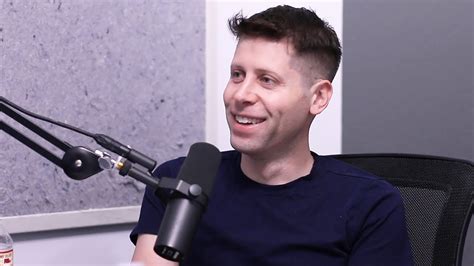In the world of Silicon Valley, it’s not often that the public gets a front-row seat to the high-stakes drama playing out behind closed boardroom doors. Sam Altman’s exit from Y Combinator (YC) and his subsequent focus on OpenAI has sparked a wave of curiosity and debate. Was it a firing, an amicable separation, or something in between? With both sides offering seemingly amicable narratives, it’s pertinent to dive deeper into the language and circumstances surrounding Altman’s exit to grasp the full picture.
The conversation reached a crescendo when Paul Graham, one of the co-founders of YC, clarified via Twitter, stating, ‘People have been claiming YC fired Sam Altman. That’s not true.’ According to Graham, the situation boiled down to a simple, albeit weighty, choice: Altman could either continue as the President of YC or take the helm at OpenAI, following its shift to a for-profit model. This isn’t just corporate drama; it’s about understanding the real meaning and subtly of corporate language and decisions.
Comments from various observers added layers of understanding and critique. One user put it succinctly: “If an employee works from home too much and is told to either come into the office or look for employment elsewhere, isn’t that a firing?” This analogy cuts to the heart of the matter. The ultimatum given to Altman was equivalent to an enforced choice—remain at YC or pursue OpenAI full-time. Here, language plays a pivotal role where ‘fired’ connotes a more dramatic end and ‘choice’ implies a voluntary shift, even if reality sits somewhere in between.
In another light, some comments considered the dual role Altman had been playing. One commenter aptly noted, “This isn’t just about splitting hairs over the word ‘fired.’ It’s about understanding the pressures and expectations at the executive level.” Running a major incubator like Y Combinator while spearheading a groundbreaking initiative like OpenAI isn’t just about time management; it’s about strategic alignment and focus. Conflicts of interest and divided attentions at such high levels can disrupt organizational coherence.
Additional scrutiny was directed at the timing and the public nature of Graham’s tweet. As some pointed out, if this was merely about clarifying a misunderstanding, why wait so long? Especially given that the rumors had been swirling for months and were picked up by significant media outlets like the Washington Post. One commenter noted the interesting timing could suggest an underlying narrative that necessitated defending Altman’s reputation amid ongoing public discourse and scrutiny.
Alternative perspectives emerged as well. For instance, imagine Altman had chosen YC over OpenAI. Would the tech landscape look drastically different today? It’s a compelling thought experiment that highlights how critical individual decisions are in shaping industry trajectories. In a world where tech leaders often wear multiple hats—take Elon Musk as an example—analyzing how these leaders manage (or fail to manage) such roles can offer insights into the broader impacts on their organizations.
Moreover, the nature of Altman’s
departure sheds light on another vital aspect: the cultural and ethical standards within tech organizations. A comment pointed out that in most organizations, taking on another full-time CEO role would be a clear-cut conflict of interest, often resulting in straightforward termination. Yet, within the elite circles of Silicon Valley, such maneuvers are more diplomatically handled to maintain relationships and reputations. This case subtly underscores the unique cultural norms that govern tech giants.
Ultimately, the debate about whether Altman was fired or simply chose to leave YC will likely remain—much like many corporate dramas—in the realm of public interpretation and personal biases. What is clear, however, is that the decisions and actions of tech leaders like Altman continue to significantly mold the trajectory of technology and its influence on society. For the public and tech community alike, understanding these nuances not only offers clarity but also helps in setting benchmarks for leadership and ethical conduct in the industry.


Leave a Reply